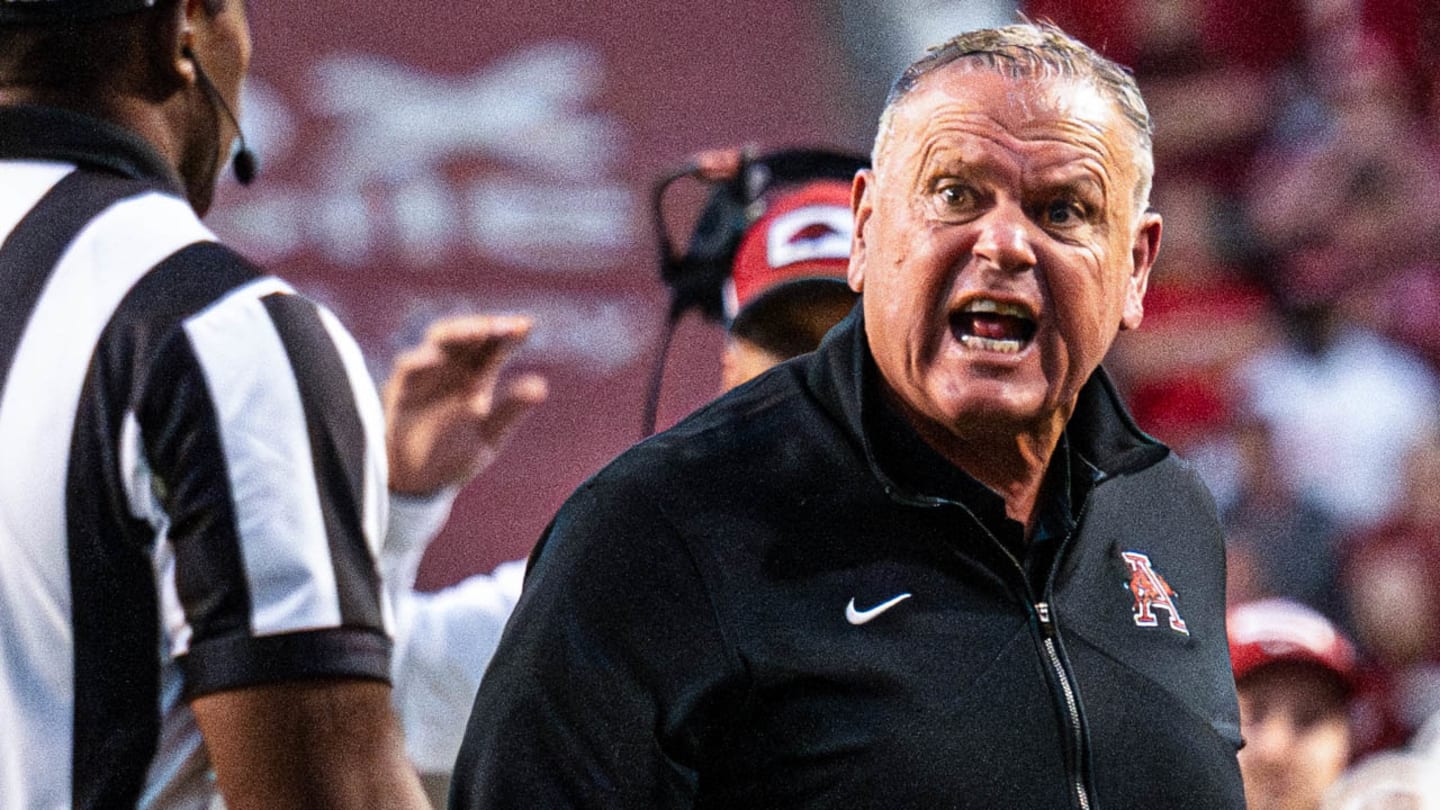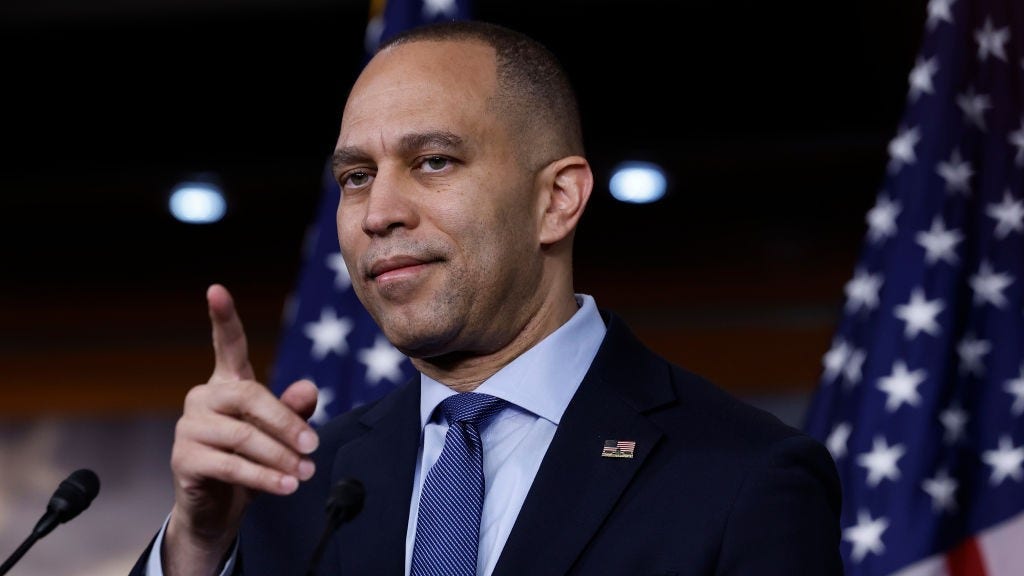South-Carolina
Can’t stop scrolling? Ideas from teens for curbing your social media habit

“What advice would you give to young people who are new to social media?”
“Have you ever felt like you need to change your social media use…?”
Teens and young adults, from across the country, answered these questions in a text survey back in 2020. Their answers are eye-opening.
“I would tell young people… the internet is far off from reality and the more time you spend on it, the more you forget what real life is actually like…,” one person wrote.
“Don’t let social media control your life or your self-esteem,” another texted.
The study, published in September, reveals a striking awareness about the potential harms social media can have on teenagers’ mental health but also their persistent attempts to counter these harms.
Some respondents explicitly said social media made them feel depressed. Many asked their parents to help them stop using it. Nearly two-thirds of respondents gave some version of this advice to future teens: Don’t use social media. It’s okay to abstain. Or delete your accounts.
“I have repeatedly deleted Instagram in an effort to improve my emotional state but then, I reinstall. Many times.” a respondent wrote.
About 95% of U.S. teens today use some type of social media, and about a third say they use it “almost constantly,” the Pew Research Center found in August. At the same time, teens and tweens are facing a mental health crisis. And research indicates that these two trends are intertwined: that social media can cause depression and lower life satisfaction.
While clinicians and psychologists try to come up with remedies to this crisis, some of them are realizing something paradoxical: Teens and young adults may be the best source of advice and solutions. They are the experts of these apps – not their parents.
And they’ve been affected by social media more than any other generation, says Emma Lembke, who’s 20, and founded a movement to help teens have a healthy relationship with social media, called Log OFF. “We, Gen Z, have felt so tangibly the impact of being left alone to big tech’s profit business model,” she explains. “And that relationship is completely asymmetric, and it is just harming young people.”
By listening to young people, Lembke believes, parents can work with teens to help them minimize the harms of these platforms while maximizing their benefits.
“I do believe social media has great aspects as well,” says Rijul Arora, age 26, a digital wellness coach and consultant, who leads a project called LookUp India, aimed at helping teens unhook from social media. “I’ve been given a lot of opportunities because of social media. I can amplify positive content, and I’m connecting with a lot of people worldwide.”
If you’re a young adult struggling to keep up with school because you can’t put down your phone, Arora and Lembke don’t advise trying to cut off from social media altogether. Instead they say find the sweet spot, “where you take the positive but leave the negative.”
The goal is to give youth more agency over social media apps, Arora says. “So teens are using these apps instead of the apps using teens.”
And parents – this all applies to you too: Here’s how to support and nudge your teen toward balanced screen use, while changing your own habits.
Step 1: Learn what you’re up against
/ Rose Wong for NPR
/
Rose Wong for NPR
Here’s what teens and young adults say over and over again: Know what you are up against with social media.
Back when Lembke was in sixth grade, she really, really, really wanted a phone.
“I remember as each one of my friends got a phone, each one of them was getting pulled away from conversations with me, from even playing on the playground,” Lembke explains, “So my initial response to this phenomenon was, ‘Okay, there must be something so magical and amazing within these social media apps.”
Then she got her own phone, and she says, “And I remember for the first few months I was in love with Instagram.”
“One day, I think I commented, [to] Olive Garden, ‘I love you.’ And they responded, ‘We love you, too.’” Lembke says. “And I was screaming around the house. It felt like the best day ever.
But within a few months, her time on her phone had increased from one hour to five or six hours each day. And her relationship with her phone shifted.
“I realized that the magic I thought Instagram – and all these social media apps – had was really just an illusion,” she says. “As I began to scroll more, I felt my mental, and physical health really suffer.”
Lembke wishes someone would have told her about this possibility before she began using social media.
“I have an anxiety disorder, and I have OCD,” Lembke told Sen. Richard Blumenthal, D-Conn., in March 2022, during a roundtable hosted by the nonprofit Accountable Tech. “I was never warned that entering these online platforms would only amplify the things that I already struggle with.”
Meta global head of safety Antigone Davis said in a statement emailed to NPR that the company refers to research on social media and feedback from teens and families. The company has launched “more than 30 tools to support families,” she says, including some “that allow teens and parents to navigate social media safely together.”
A representative from TikTok noted in an email that the company released in March a tool for users to monitor their screen time.
So here’s what Lembke and other young people want you to know about how the apps work:
1) These apps aren’t necessarily going to improve your life. They aren’t necessarily going to help your fear of missing out. In fact, some teens say their feelings of FOMO actually worsened after starting social media. And for teenagers who are already struggling with mental health problems, studies suggest that social media can exacerbate these issues.
2) The goal is to keep you on the phone, even if you don’t want to stay. Even if you feel like social media is hurting you. The apps are designed to keep you using them so you can see ads. That’s how social media companies make money, Meta’s Mark Zuckerberg explained to Congress in 2018.
Social media apps tap into an ancient pathway in your brain that makes you crave using them and make it extremely difficult to stop, says neuroscientist Anna Samaha at the University of Montreal. “Social media apps know very well how to exploit human behavior to keep you coming back.”
Many teens say they feel like social media apps control them instead of vice versa. “I felt this addiction. I felt this pull, as if I had lost agency… .” Lembke said to Sen. Blumenthal. “As a young female, as a young person, that’s incredibly scary.”
But here’s the third thing teens say, over and over again about social media overuse: you can break the habit. And it starts with one key step: a digital audit.
Step 2: Get your baseline

/ Rose Wong for NPR
/
Rose Wong for NPR
Because of the way social media taps into our brain circuitry, most of the time, we hardly realize we’re using the apps. It’s habitual or even subconscious. That’s why young people suggest doing a digital audit to help bring this usage into your consciousness.
For a project in high school English class, Sofie Keppler, decided to track the time she spent on each app on her phone each day for a week. The results triggered several big epiphanies for the 16-year-old: “First, that I was using my phone like a lot – I mean a lot – more than I thought,” she says.
Second: “It made me think like, maybe I should limit myself …so I’m not always on social media, and I’m talking to everyone around me,” she says, “The more I was on the phone, the more I was ignoring people in social settings.”
Ironically, you can do a digital audit easily with an app, such as Apple Screen Time, Moment, Toggl Track, and Rescue Time.
“Facts don’t lie …[tracking my usage] really got my eyes to open up,” Lembke says on the Log OFF podcast. “When I downloaded Moment and I saw I had like 200 pickups of my phone each day, I was horrified. People don’t understand those statistics … until they really, really see them.”
Then once you understand your baseline, have self-compassion, says Rijul Arora, who’s struggled with what he describes as an addiction to social media himself. Don’t feel ashamed or anxious about it.
In workshops he gives on managing social media use, he tells teens: “Even if you have very high screen time … first acknowledge that you’re doing that, and it’s okay to be that way,” he says. Then when a teen seems ready to change, he adds: “It’s not okay to stay that way.” … which brings us to the next step.
Step 3: Add “friction” to make yourself pause
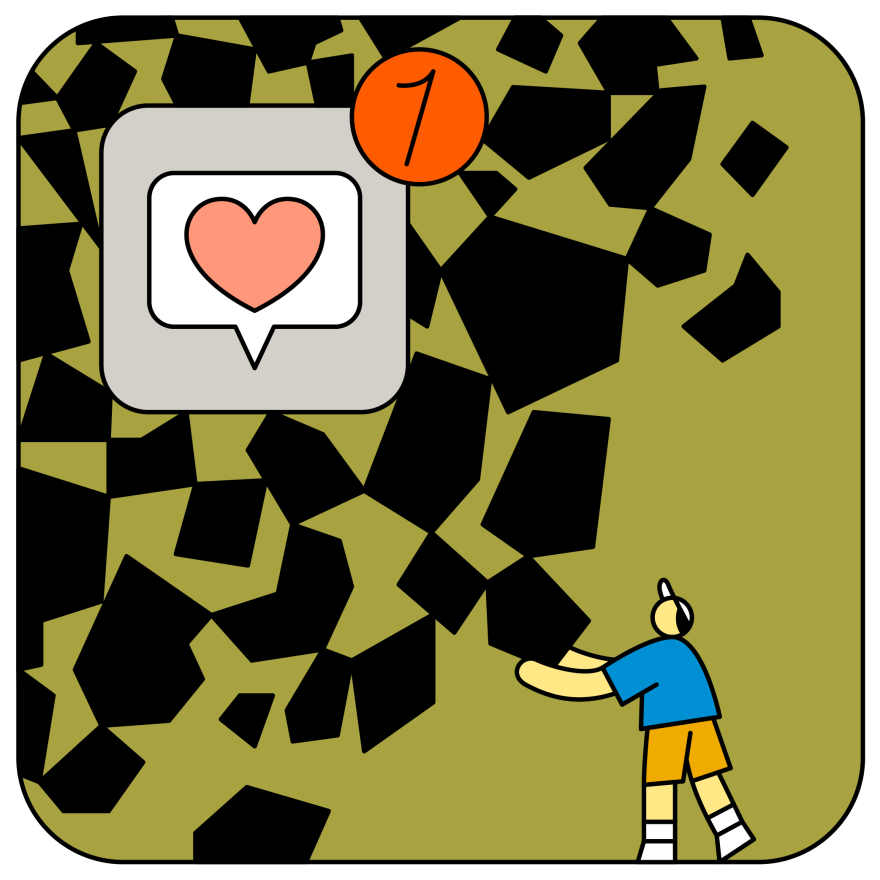
/ Rose Wong for NPR
/
Rose Wong for NPR
Just as friction on the road slows down your car, friction on social media slows your usage. Basically, it’s adding apps that throw up small obstacles when using social media. Friction makes you pause for a bit and think before you mindlessly log on, scroll or click.
Some “friction” even makes you take breaths, fill out a wellness survey or meditate after some amount of time engaged with social media.
Adding friction is surprisingly easy. Again, there are a bunch of apps. Lembke recommends HabitLab from Stanford University. The app uses more than 20 interventions to help you reduce your time on whatever apps you choose. For example, HabitLab runs a clock at the top of the screen, showing you how much time you’ve spent on the app. It also blocks your news feeds, and even stops your scroll after a certain amount of time.
For some apps, it uses an intervention called “Feed Diet,” which hides recommended content. Or it uses the “Mission Goal” intervention which makes you type in why you’re entering this site.
Other friction apps include Moment, Freedom, Forest, and Screentime Genie. Both Instagram and TikTok also have tools inside the apps to add friction.
Do these friction apps work? “Oh, I think my screen time decreased by like 80%,” Lembke says, while using HabitLab.
If you’re tired of apps, Lembke recommends something she created: the 5-minute power scroll. While looking at your newsfeed, stop at each image for 5 minutes. Say to yourself, “Okay, with this image and with this person, why am I following them? Does this image make me happy? Am I benefiting from their content?” And if not, “unfollow them and give yourself grace to do that,” Lembke says.
This 5-minute power scroll helps you reflect on why you’re using the app and what you want to prioritize during your time online, she says. “It’s how can I maximize its benefits for me, while mitigating its harms.
Step 4: Hack your apps’ default settings

/ Rose Wong for NPR
/
Rose Wong for NPR
On many apps, Arora says, the default settings tickle his brain circuitry in a way that amplifies his cravings and habitual overuse.
“Never go by the default settings that tech companies give you,” says Arora. “Kids love this tip! Because they hate to be manipulated.”
Over and over again, teens say that turning off notifications is the first – perhaps the most critical – step here. You can do it for only certain times of day, if you need.
But also explore all the setting options, Arora says, including those related to privacy, your feed, comments and likes. “For example, many people don’t realize that you can turn off ‘likes’ on Instagram,” he says. “This helps reduce the competitiveness of the app.”
And if an app recommends videos or other content, or starts the next video on auto-play, don’t click. Go and find the video you want to look at, Lembke says. Remember, she says, You’re in charge. Not the app.
Both Instagram and TikTok have information for parents on how to set up teens’ accounts in a way that makes them safer but also can help with overuse.
For example, TikTok has started setting all users under age 18 to a screentime limit of 60 minutes each day. When they reach that limit, the app prompts them to enter a passcode if they want to keep watching, “requiring them to make an active decision to extend that time,” the company explained in March.
And in Instagram, teens can turn on notifications that urge them to “take a break” after a certain amount of scrolling. The app will also “suggest that they set reminders to take more breaks in the future,” Adam Mosseri, Head of Instagram, noted in December 2021.
Step 5: Enrich your 3D life

/ Rose Wong for NPR
/
Rose Wong for NPR
This one is huge. And it comes from Alassane Sow, 20, who’s studying environmental microbiology at Michigan State University. He and many other young people notice that they use social media when they’re bored (or stressed and need a distraction).
“A lot of people have a sort of shame when they see that they have 10 hours of screen time a day, and they don’t like that,” Sow explains. “But they don’t have anything else to do – or they feel like they don’t.”
Sow saw this in himself. “At some point, I realized that I couldn’t sit down for 5 minutes in my own space without looking at my phone for some sort of stimulus. That’s when I noticed, like, something was off,” he says.
So he went out and started to find other hobbies that don’t use his phone. He even has a special name for this: long-format entertainment. These are activities that take time to complete, such as reading a book, or drawing a picture.
“These activities make sure my brain isn’t only entertained by short videos and stuff like that,” he explains.
“I consciously plan to do them — instead of being on my phone I say to myself ‘I’m going to read a chapter of this book today or I’m going to go see my friends – that’s my favorite thing to do.”
Psychologists, psychiatrists and therapists agree whole-heartedly with Sow. Reinvigorating your life offline is critical to healthy social media usage. Then cutting down social media becomes much easier. You don’t have to accept boredom offline.
“I’m a big believer in passion in your life,” explains therapist Bob Keane at Walden Behavioral Care. “What do you really like to learn? What gets you really excited besides your phone? And that’s, I think, what we really have to encourage kids to develop.”
Not sure where to get started finding a passion? Lembke’s Log OFF project has a whole series of projects and challenges to try, from dipping your toe into the 3D world to taking on big, long-term projects.
Step 6: Reach out to your parents for help — or if you’re a parent, get involved

/ Rose Wong for NPR
/
Rose Wong for NPR
This isn’t ironic or a joke. Teenagers say over and over again that they want their parents to help them regulate their social media use.
They don’t want parents to rip the phone away or be controlling or bossy. And they definitely don’t want to feel judged or shamed for their social media use. But they want parents to listen empathetically, offer gentle advice and set up guard rails. Even some rules. They want help learning to manage their device themselves.
“In order to prevent addiction and manage digital wellbeing, it is important for parents to set boundaries for their children/teenagers,” writes recent high-school graduate Keegan Lee in a blog post on Log OFF, called “A Message from Gen Z to Parents.” Lee describes how to talk to teens about their usage and gives some ideas for how to set up rules, including “Try to keep tech out of the bedroom.”
“Children may not like this suggestion,” she continues, “however, explain to them the purpose of the bedroom is used to rest and recharge.”
Also, Lee suggests setting clear consequences and punishments when kids violate tech rules. And “revisit the rules frequently,” she writes. If parents don’t help kids manage their screen use, she explains, no one else will.
Keane at Walden Behavioral Care says teenagers in his support group told him the same idea: “The kids were pretty clear to us that they need help,” he says. “They need help figuring out ways to be able to manage this because they told us, clearly, ‘We can’t do it by ourselves.’ ”
And the rules need to apply to the whole family – including the parents themselves. “For example, if you have a family dinner, no one has a device at the table,” Keane suggests. “If a parent is driving your adolescent to a game or a practice … the parent can say, ‘If you’re going to want me to drive you, you’re not on your phone, you’re talking to me.’”
The goal is simple but critical: Get kids back in the habit of socializing face-to-face. Because unlike online interactions, talking to other humans in person “is the glue of genuine human connection,” says therapist Kameron Mendes, who works with Keane at Walden Behavioral Center. And it’s time to replenish that glue.
“Adolescence is when kids start to become their own people in the world,” Mendes adds. “They try on finding friends, connecting with other people and connecting with other types of values and ideas. For that process to take hold and flourish, we really need to restore some level of human connection.”
Copyright 2023 NPR. To see more, visit https://www.npr.org.

South-Carolina
Staff Picks: South Carolina at Clemson, other Week 14 rivalry matchups
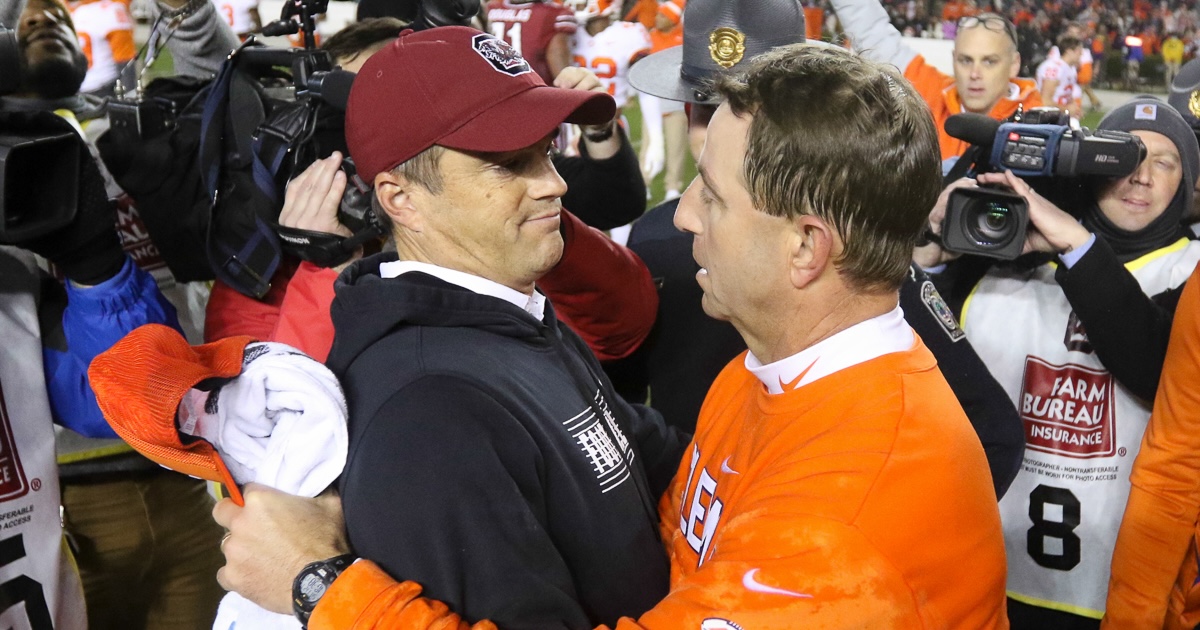
The wait is almost over. At long last, rivalry weekend is upon us.
In what will be one of the biggest games of the weekend, No. 15 South Carolina will travel to the upstate to face No. 12 Clemson for the Palmetto Bowl. Kickoff is at noon on ESPN on Saturday.
The GamecockCentral and 107.5 The Game staffs shared their predictions for the game between the Gamecocks and Tigers as well as other Week 14 matchups from around the country.
[GamecockCentral: Subscribe for $1 for 7 days]
George Bagwell: I think this is a bad matchup for Clemson. They’re not working with a great offensive line while they face an elite defensive front. They just gave up 288 rushing yards to The Citadel, the most against a Clemson defense since Georgia in 2014, and now they’re facing a highly efficient run-based offense in South Carolina. South Carolina 38, Clemson 20.
Peyton Butt: This could honestly go either way so making a prediction was a challenge. Clemson has struggled with some injuries thus far but the two are pretty evenly matched. I think the game being at Clemson will be a huge advantage and boost for the Tigers. Gamecock defense will have to put pressure on Cade Klubnik fast but I think Klubnik’s accuracy and consistency will be a problem for the Gamecocks. Clemson 45, South Carolina 28.
Elijah Campbell: It’s one of the most highly anticipated games in the history of this great rivalry and for the first time since I was in high school, I really feel like this Gamecocks team will go into Clemson and win. Shane Beamer said that forcing turnovers is a must and I agree. I also see the Kennard and Stewart edge rushing combo working perfectly to force one of the key turnovers as well as keeping Clemson’s rushing attack at bay. Give me the Gamecocks in a thriller! South Carolina 21, Clemson 17.
Chris Clark: I think this South Carolina team is battle-tested and will have an advantage at the line of scrimmage on defense. I expect a competitive game, but I’m taking the Gamecocks to get it done on the road. South Carolina 27, Clemson 20.
Terry Ford: USC wins a tight one on the road. The way the Gamecocks offense has come on to go along with one of the best defenses in America make Carolina tough to beat. Plus, USC has been real good on the road all year. Stat to file away…ESPN SP+ Special Teams Rankings Nationally: Gamecocks 42nd…Tigers 109th. South Carolina 23, Clemson 20.
Griffin Goodwyn: Recent history would say that the Gamecocks are expected to struggle when they head to Memorial Stadium on Saturday. South Carolina has lost three of its last four road matchups against Clemson, and those three defeats were by a combined 88 points. But the Gamecocks’ last trip to the Tigers’ home stadium was a different story, as they claimed a 31-30 victory facing long odds as an unranked team looking to take down a top-10 squad with College Football Playoff aspirations. The postseason stakes are higher for both teams in this year’s Palmetto Bowl, and so is the possibility of an upset. South Carolina is in the midst of a five-game win streak — and is in prime position for a sixth-straight victory. South Carolina 28, Clemson 27.
[On3 App: Get South Carolina push notifications from GamecockCentral]
Tyler Head: High stakes game. Gamecocks have to slow down the Tigers rushing attack. I think Sellers has another star making performance. South Carolina 34, Clemson 31.
Wes Mitchell: South Carolina’s defensive line has carried it all season long and I don’t think that will stop this week, especially against a Clemson offensive line that has been banged up. The key will be can the Gamecocks protect the football, not let the moment be too big, and just do what they do otherwise. South Carolina 31, Clemson 21.
Jay Philips: Here we are, a Carolina/Clemson game that really matters for both teams beyond the daily rivalry. The Gamecocks are playing some of the best football in the country and will feel no fear in traveling to Memorial Stadium this weekend. Based on their form I think Carolina is the slightly better team, and if they continue on their current path they should win this game. In a tense contest give me South Carolina 30, Clemson 23.
Kendall Smith: I could write a long paragraph about why I am going with this final score, but all I’m going to say is I think this game belongs to the Gamecocks if they play to their potential. South Carolina 27, Clemson 23.
Mike Uva: Two teams with strong defenses who have QBs who have improved throughout the year. This should be an instant classic, especially with the college football playoff hopes hovering both these teams. South Carolina 20, Clemson 17.
Jack Veltri: I’ve said it since the summer that South Carolina would beat Clemson this year, and that was before any of us knew the Gamecocks would be where they are today. I still feel they’re going to get the job done. They’ve faced all kinds of adversity this season and handled it well. The key here will be to take care of the football on offense and the defense creates takeaways. South Carolina 34, Clemson 28.
[Get our free newsletter! Don’t rely on search engines and social media for your Gamecock info.]
Chris Wellbaum: Which quarterback do you trust against which defense? Both teams will try to lean on their run game, and the defense that can force some turnovers will win the game. Clemson 31, South Carolina 16.
Kevin Miller: In one of the most anticipated matchups in recent rivalry history, South Carolina and Clemson are both ranked and holding on to slight hope for the College Football Playoff. The Gamecocks have played better than the Tigers in recent weeks, but the game is in the Upstate. In classic rivalry fashion, this game could come down to the football cliches: turnovers, 3rd-down conversions, and explosive plays. Give me the Gamecocks in a tight one: South Carolina 27, Clemson 24.
Tennessee at Vanderbilt
Michigan at Ohio State (The Game)
Auburn at Alabama (Iron Bowl)
Notre Dame at Southern Cal (The Battle for the Jeweled Shilleagh)
Oklahoma at LSU
Texas at Texas A&M (Lonestar Showdown)
Marshall at James Madison
Virginia at Virginia Tech (The Commonwealth Clash)
George Bagwell (63-54)
Vanderbilt
Ohio State
Alabama
Notre Dame
LSU
Texas
James Madison
Virginia Tech
Peyton Butt (63-54)
Tennessee
Ohio State
Alabama
Notre Dame
Oklahoma
Texas
James Madison
Virginia Tech
Elijah Campbell (76-41)
Tennessee
Ohio State
Alabama
Notre Dame
LSU
Texas A&M
Marshall
Virginia Tech
Chris Clark (66-51)
Vanderbilt
Ohio State
Alabama
Southern Cal
Oklahoma
Texas A&M
Marshall
Virginia Tech
Terry Ford (83-33)
Tennessee
Ohio State
Alabama
Notre Dame
LSU
Texas A&M
James Madison
Virginia
Griffin Goodwyn (81-36)
Tennessee
Ohio State
Alabama
Notre Dame
LSU
Texas
James Madison
Virginia Tech
Tyler Head (66-51)
Tennessee
Ohio State
Alabama
Notre Dame
LSU
Texas A&M
James Madison
Virginia Tech
Wes Mitchell (78-39)
Vanderbilt
Ohio State
Alabama
Notre Dame
LSU
Texas
James Madison
Virginia Tech
Jay Philips (75-42)
Tennessee
Ohio State
Alabama
Notre Dame
LSU
Texas
James Madison
Virginia Tech
Kendall Smith (68-49)
Tennessee
Ohio State
Alabama
Notre Dame
LSU
Texas
James Madison
Virginia Tech
Mike Uva (76-41)
Tennessee
Ohio State
Alabama
Notre Dame
LSU
Texas
James Madison
Virginia Tech
Jack Veltri (78-39)
Tennessee
Ohio State
Alabama
Notre Dame
LSU
Texas
Marshall
Virginia Tech
Chris Wellbaum (63-54)
Vanderbilt
Ohio State
Alabama
Notre Dame
LSU
Texas
James Madison
Virginia Tech
Kevin Miller (50-22)
Tennessee
Ohio State
Alabama
Notre Dame
LSU
Texas
James Madison
Virginia Tech
South-Carolina
College Football Picks: Expert Predictions For Texas-Texas A&M, South Carolina-Clemson, Kansas State-Iowa St.

Rivalry week is upon us, and all eyes will be on College Station, Texas, as No. 3 Texas and No. 20 Texas A&M for the first time since 2011. This one is even bigger than expected as the winner will move on to play Georgia in the SEC Championship Game. The Longhorns will likely stay in the College Football Playoff bracket if they lose, but the Aggies almost certainly are in a CFP do-or-die situation.
Kansas State and Iowa State will tee it up in Ames, and South Carolina will head upstate to take on Clemson in games that, very quietly, can still impact the CFP race.
Here are the picks from Outkick writers Trey Wallace and Barrett Sallee, who are tied in straight up and against the spread heading into the biggest weekend of the season. Keep in mind, winners against the spread in the wild card games are worth two points in our completely made-up game.
Trey: 38-14 straight up, 27-25 against the spread (29 points)
Barrett: 38-14 straight up, 27-25 against the spread (29 points)
Texas (-5.5) at Texas A&M
Wallace: Thank goodness this rivalry has returned after 13 years. I don’t know what type of wakeup call Texas A&M needed last week in Auburn, but they got it. Now, the Aggies still control their destiny, but so do the Longhorns, and I expect their offense to cause the opposing defense some problems. I think this one comes down to the fourth quarter, and Texas A&M finds a way to win this game late, something they couldn’t do last week against the Tigers.
Texas and Texas A&M will play for the first time in 13 years on Saturday (Photo by Tim Warner/Getty Images)
Sallee: Give me the Longhorns to win – and do it by double digits. I don’t care that their quarterback situation is in flux because both Quinn Ewers and Arch Manning are capable of getting the job done against an Aggies bunch that has to be down in the dumps after last week’s quadruple overtime loss at Auburn. Expect Texas’ defense to have its best performance of the season.
Kansas State at Iowa State (-2.5)
Wallace: Another wild game in the Big 12 awaits, as both teams still fight for a spot in the championship game, thanks to some wild tiebreaker rules. While this feels like a game for Avery Johnson to flourish at quarterback for Kansas State, I think Iowa State’s Rocco Becht could be the one that comes out on top. Even though the Wildcats have only given up more than 20 points just once in the last 5 games, this is the Cyclones day.
Iowa State wins, and covers.

MANHATTAN, KS – NOVEMBER 23: Quarterback Avery Johnson #2 of the Kansas State Wildcats runs to the outside against the Cincinnati Bearcats in the first half at Bill Snyder Family Football Stadium on November 23, 2024 in Manhattan, Kansas. (Photo by Peter Aiken/Getty Images)
Sallee: I’m a big Avery Johnson fan, and he will show you why in what will be a win for the Wildcats en route to the Big 12 Championship Game. He’s healthy again, which means that they will unleash a punishing rushing attack against a Cyclones defense that hasn’t fared well stopping the run.
South Carolina at Clemson (-3)
Wallace: This one should be a lot of fun. Both offenses have been playing well, but its the Gamecocks defense that continues to amaze me at times. I would argue that South Carolina is playing some of the best football in the SEC right now/ For Clemson, they are fighting for a spot in the college football playoff as well, which adds so much more fuel to this game. This one comes down to Tocket Sanders running the ball for the Gamecocks, and Clemson QB Cade Klubnik tossing a few interceptions.
I’m going with the Gamecocks to win the game.

Can Dabo Swinney lead the Clemson Tigers to the College Football Playoffs? . (Photo by John Byrum/Icon Sportswire via Getty Images)
Sallee: The Gamecocks are one of the hottest teams in the country, and still have an outside chance at making the CFP. However, it needs to win and have several dominoes fall around the country. Expect coach Shane Beamer to unleash a monster rushing attack with quarterback LaNorris Sellars and running back Rocket Sanders, and the defensive front to rattle Tigers quarterback Cade Klubnik.
Wild Card Games
Notre Dame (-7.5) at USC
Honestly, I have no idea why this is a single-digit spread. I call Notre Dame the “best, most boring team in the country” because the Fighting Irish casually go about their business bludgeoning their opponents until they say “mercy.” That will happen on Saturday against a broken Trojans team that has been a massive disappointment.

Can Alabama QB Jalen Milroe have a bounceback game against Auburn in the Iron Bowl (Photo by Brandon Sumrall/Getty Images)
Auburn @ Alabama (-11.5)
The Tigers have the momentum entering this game, but Alabama is still playing for a potential spot in the college football playoff. So, what gives on Saturday afternoon? If Auburn can follow the same defensive plan as Oklahoma, who upset Alabama last week, then maybe they can cause Jalen Milroe to give up the ball a few times. If not, and they let Jalen make plays outside the pocket, it could be a long day for Auburn.
I don’t know if I trust Payton Thorne to win this game for Auburn, but I do trust Jarquez Hunter to run the ball. I think Alabama wins, but the Tigers cover.
Alright, that will do it for this week’s picks. Email your thoughts about the weekend to Trey.Wallace@OutKick.com
South-Carolina
Dawn Staley shares how South Carolina has responded since loss
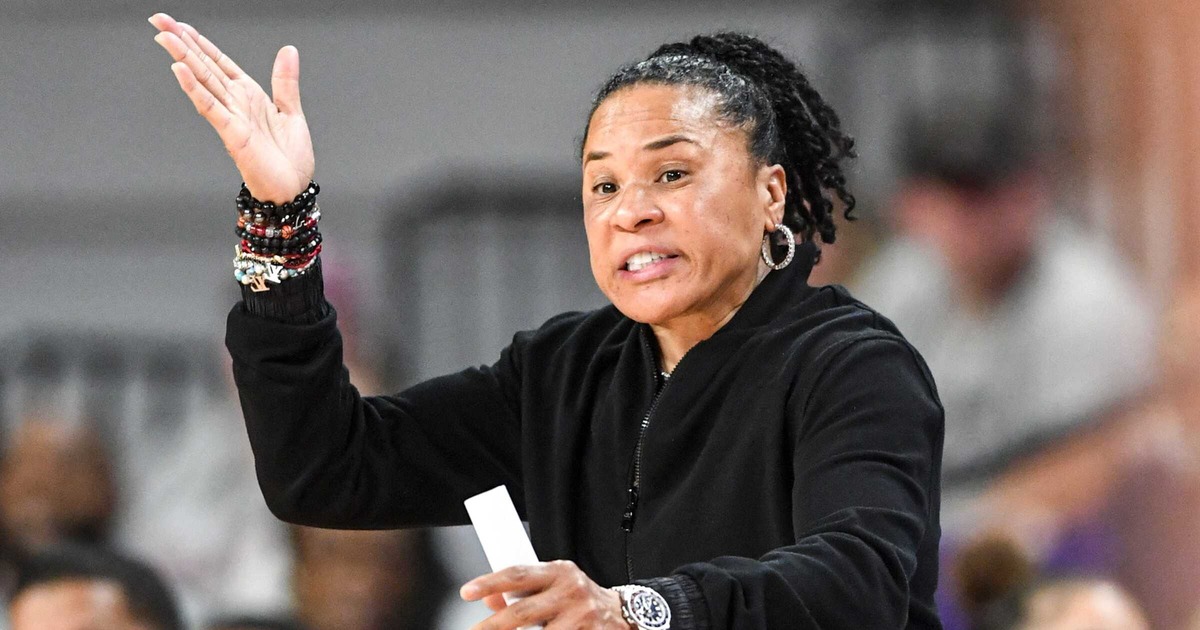
South Carolina had its run of 43 straight wins come to an end this past Sunday as Dawn Staley and the Gamecocks suffered a 77-62 loss at UCLA.
Staley said after the loss and ahead of the matchup with Iowa State on Thursday that she thought her team would respond the right way. Needless to say the Gamecocks did against Iowa State, pounding the Cyclones 76-36 on Thanksgiving Day.
“That’s what a team does. This is a resilient group,” Dawn Staley said. “This is a team that obviously hasn’t dealt with a whole lot of losing. It’ll shake you for a moment.
“We’ve got a 24-hour rule. Bask in the glory of a defeat and you handle a defeat. And you handle it with grace, but you handle it with learning lessons. Things were exposed and hopefully we can fill some of those holes and get back to happier times.”
It was certainly a happier time for South Carolina on Thursday. The Gamecocks led Iowa State 19-3 at the end of the first quarter and 35-9 at halftime.
South Carolina went on a 32-0 run at one point in the first half and easily handled an Iowa State team that was ranked No. 15 nationally.
Dawn Staley said ahead of the game that she wanted her team to play better offensively and it did. South Carolina shot 45.3 percent from the floor against Iowa State after connecting on only 36.4 percent of its attempts against UCLA.
“Our offense, just getting better looks and getting better ball movement,” Dawn Staley said of where South Carolina needed to improve. “The ball has been sticking too much to individual players and it’s stagnant.
“We need to get our bigs involved, so we’re going to look to get them involved in positions they can score, whether that’s two feet in the paint or hitting mid-range shots. If you’ve got 3-point range, you can take good, fluid, rhythm 3s.”
South Carolina relied on a balanced scoring attack against Iowa State as senior forward Sania Feagin and freshman forward Joyce Edwards led the way with 13 points each.
The Gamecocks will be back in action on Saturday when they face Purdue in Fort Meyers, Florida. Tip off is set for 11 a.m.
-

 Science1 week ago
Science1 week agoTrump nominates Dr. Oz to head Medicare and Medicaid and help take on 'illness industrial complex'
-

 Health6 days ago
Health6 days agoHoliday gatherings can lead to stress eating: Try these 5 tips to control it
-

 Science3 days ago
Science3 days agoDespite warnings from bird flu experts, it's business as usual in California dairy country
-

 Health4 days ago
Health4 days agoCheekyMD Offers Needle-Free GLP-1s | Woman's World
-

 Science1 week ago
Science1 week agoAlameda County child believed to be latest case of bird flu; source unknown
-

 Technology3 days ago
Technology3 days agoLost access? Here’s how to reclaim your Facebook account
-

 Sports1 week ago
Sports1 week agoBehind Comcast's big TV deal: a bleak picture for once mighty cable industry
-

 Entertainment2 days ago
Entertainment2 days agoReview: A tense household becomes a metaphor for Iran's divisions in 'The Seed of the Sacred Fig'





